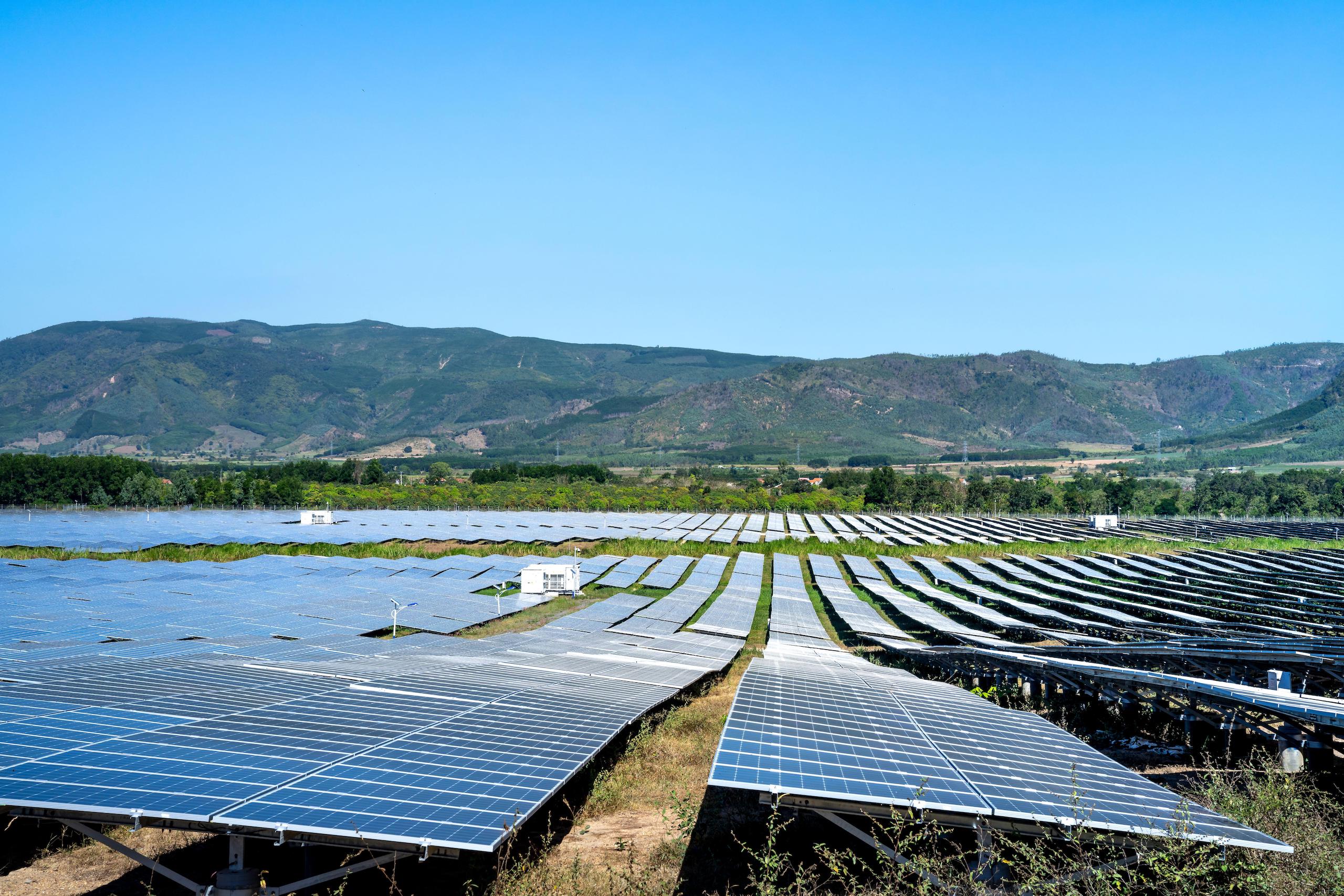Vietnam has been a Southeast Asia solar success story. It went from having barely any generation in 2018 to a quarter of its total installed capacity being solar – a 100-fold increase in two years.
This rapid growth is mainly down to the Vietnamese government’s feed-in tariff which provides a guaranteed above-market price for renewable energy producers; other incentives signed off in 2017 in an attempt to pivot away from lagging fossil fuel projects; and cheaper solar panels, some of which are assembled domestically.
Around 99% of the installed solar panels in Vietnam come from China. At the same time, despite the rise of renewables, Vietnam still relies heavily on coal.
China’s future role in Vietnam’s power system will be shaped by the Vietnam’s newest plan for its power sector. The final version of the Power Development Plan 8 is due to be published in the next month, although it has been postponed before and may be again.

A catalyst for explosive growth
China dominates the global solar panel industry, producing around 70% of global capacity, says Thu Vu, an energy finance analyst at the Institute for Energy Economics and Financial Analysis (IEEFA). “It’s nearly impossible for any country that is developing a solar power fleet not to source the equipment from there. This is even more relevant for neighbouring countries such as Vietnam. The economies of scale and steep learning curves of Chinese manufacturers make it easier for them to produce more efficient and cheaper products.”
In 2019, the Vietnam Business Forum reported that the “levelised cost of electricity” – lifetime costs of generating electricity compared with other technologies – for solar in Vietnam had fallen dramatically in the preceding four years. Vietnam’s last power development plan, number 7, projected 4 GW of solar installed capacity by 2025. This was much too conservative. By the end of 2020, 16.7 GW had been put in place.
Rooftop solar expanded particularly rapidly last year because it had a higher feed-in tariff price (US$0.0838 per kWh) than floating solar ($0.0769) and ground solar ($0.0706). With preferential tariff pricing set to expire at the end of the year, more than 10,000 rooftop solar projects were put into operation in three days, between 29–31 December 2020. These added 3 GW of capacity and increased the total installed rooftop capacity to around 7.8 GW.
Aside from equipment, Chinese businesses have also provided EPC (engineering, procurement and construction) contractors for solar projects, said Thu. “Sometimes, these contractors are supported by Chinese banks, which then allows them to provide flexible payment schedules to the project developers in Vietnam and gives them a competitive edge.” For example, it is reported that some EPC contractors from China delivering solar projects in Vietnam only required 10% payment upfront to Chinese partners, with the rest being paid more than a year later.
The future picture
Vietnam is finalising its national Power Development Plan 8 (PDP 8), which will lay the foundation for the country’s energy development until 2030 and the vision to 2045.
The draft plan prioritises the growth of power from renewable sources, mainly wind, solar and small-scale hydro. However, the plan would see “baseload coal and gas-fired power continue to dominate 57% of the pipeline to 2030,” according to a report from the Institute for Energy Economics and Financial Analysis (IEEFA).
“If Vietnam hopes to diversify its [power] generation mix, meet new demand for clean power and control power tariffs, renewables should arguably play a bigger role in Power Development Plan 8, and not less,” IEEFA said.
At times the recent solar boom has overloaded the national gird and the country doesn’t yet have the storage technology to ensure constant baseload power. Power Development Plan 8 aims to address this problem by allocating $32.9 billion for grid development until 2030, with an additional $52.1 billion until 2045.
Vietnam’s commitment to stemming growth in greenhouse gas emissions has shaped the plan. In 2019, the country committed to cutting emissions 9% by 2030, compared with business-as-usual projections from a 2014 baseline. According to its calculations, the new plan will reduce CO2 emissions 15% by 2030 compared to business-as-usual, and 29% by 2045.
Vietnam’s commitment to stemming growth in greenhouse gas emissions has shaped the plan. In 2019, the country committed to cutting emissions 9% by 2030, compared with business-as-usual projections from a 2014 baseline. According to its calculations, the new plan will reduce CO2 emissions 15% by 2030 compared to business-as-usual, and 29% by 2045.
Source: China Dialogue, June 30, 2021
Author: Linh Pham is a freelance journalist based in Hanoi, Vietnam.